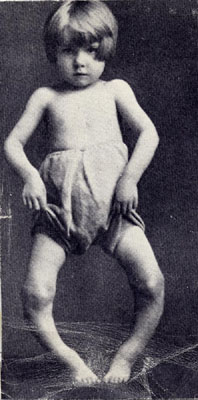But how intelligent is she? According to http://childdevelopmentinfo.com/child-development/language_development.shtml at age 24 months she should be able to do the following verbal things:
- Can name a number of objects common to his surroundings
- Is able to use at least two prepositions, usually chosen from the following: in, on, under
- Combines words into a short sentence-largely noun-verb combinations (mean) length of sentences is given as 1.2 words
- Approximately 2/3 of what child says should be intelligible
Vocabulary of approximately 150-300 words - Rhythm and fluency often poor
- Volume and pitch of voice not yet well-controlled
- Can use two pronouns correctly: I, me, you, although me and I are often confused
- My and mine are beginning to emerge
- Responds to such commands as “show me your eyes (nose, mouth, hair)”
My granddaughter has an impressive sponge like capacity to fit in with her surroundings. At 20 months, she went to Florida for a fortnight. During that fortnight she barely uttered the word "hello", preferring to use "Hi". And she loves to talk, to anyone, family or stranger.
The point here is, we reckon that she's an intelligent little girl but how can we tell. How do you measure intelligence? It's not about language entirely, is it? Parrots are reckoned intelligent, as are certain cephalopods, and certainly dolphins. But how can we really tell?
One way is problem solving. Toddlers are very keen on solving little puzzles that they set themselves. Here's the granddaughter working the clip on my camera bag. Once she had worked out how to open it, the bag became a receptacle for one of her stuffed toys.
One of the best ideas on intelligence I have ever come across is in “Why Don’t Students Like School?” by Daniel T. Willingham (2009): intelligence is the ability to make connections. This is why knowledge is important. Without the knowledge, it is impossible to connect two things. And we don't do learning like we used to. I remember having to learn thirty words of French vocabulary a week, with a test of twenty of them and a pass mark of fifteen. Without the vocabulary, you couldn't understand the language. So you had to learn it.
Such a simple definition means you can discard those ideas of multiple intelligences. All that you require is knowledge (or experience) in certain fields. I love music, for instance, and know a bit more about it than my wife, so I can appear more intelligent on musical matters even though I have a tin ear and the the dexterity of someone knitting spaghetti with their fingers when it comes to playing the guitar. My point is simple: if I can make the connections, I appear intelligent.
So, how intelligent are, for example, my granddaughter who can make rudimentary connections, and Stephen Fry, who undoubtedly knows just about everything. Well, as evidence for the intelligence of my granddaughter I adduce these instances. Last week, I went round to collect my step-daughter and her offspring. I told them we were going shopping. The granddaughter replied "Tesco". And a few days before that, when I went round, I said "Hello trouble" to her. She replied "Hello trouble. Susie's trouble." Susie is her cat. Connections. That's the key.

































